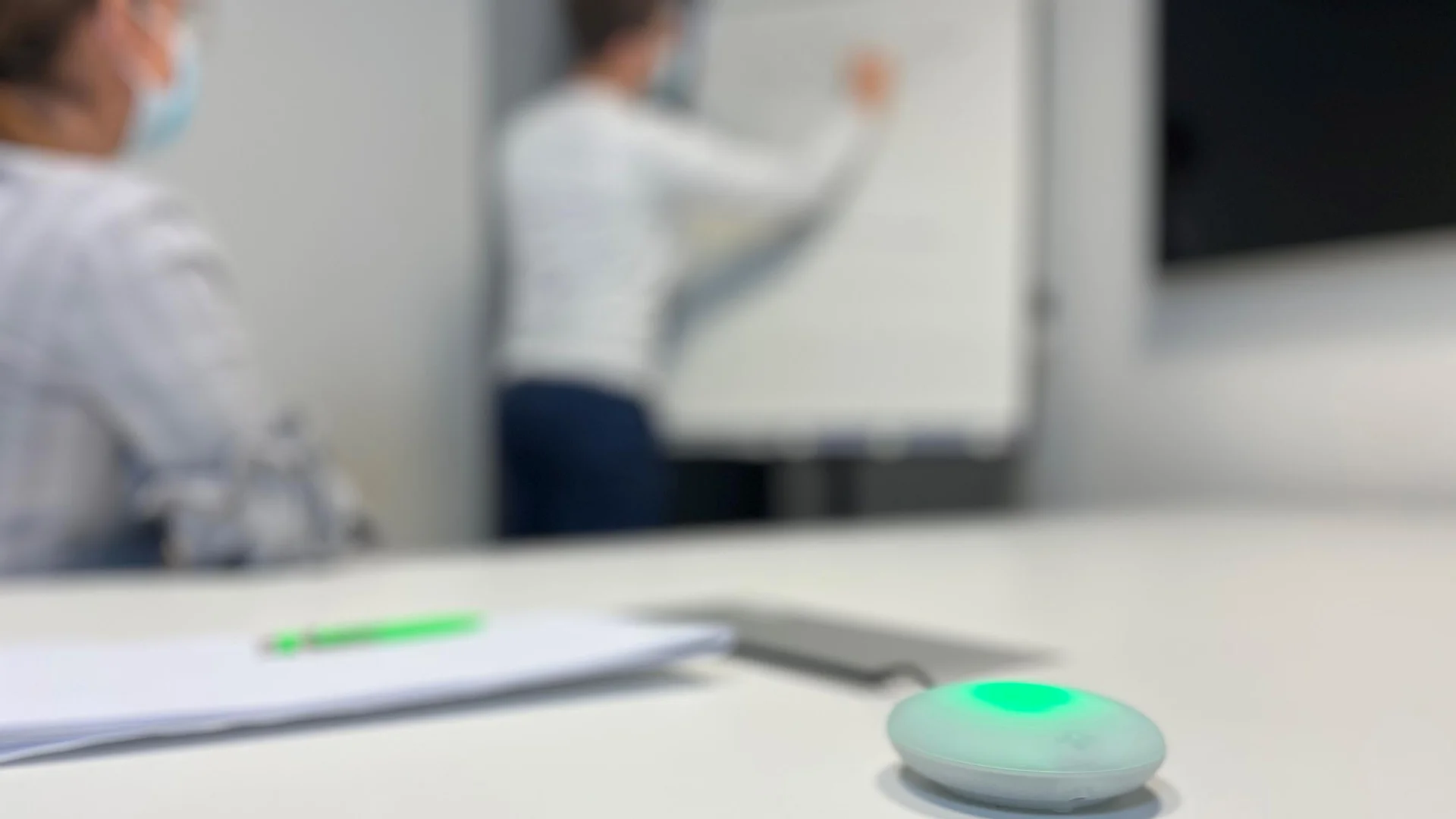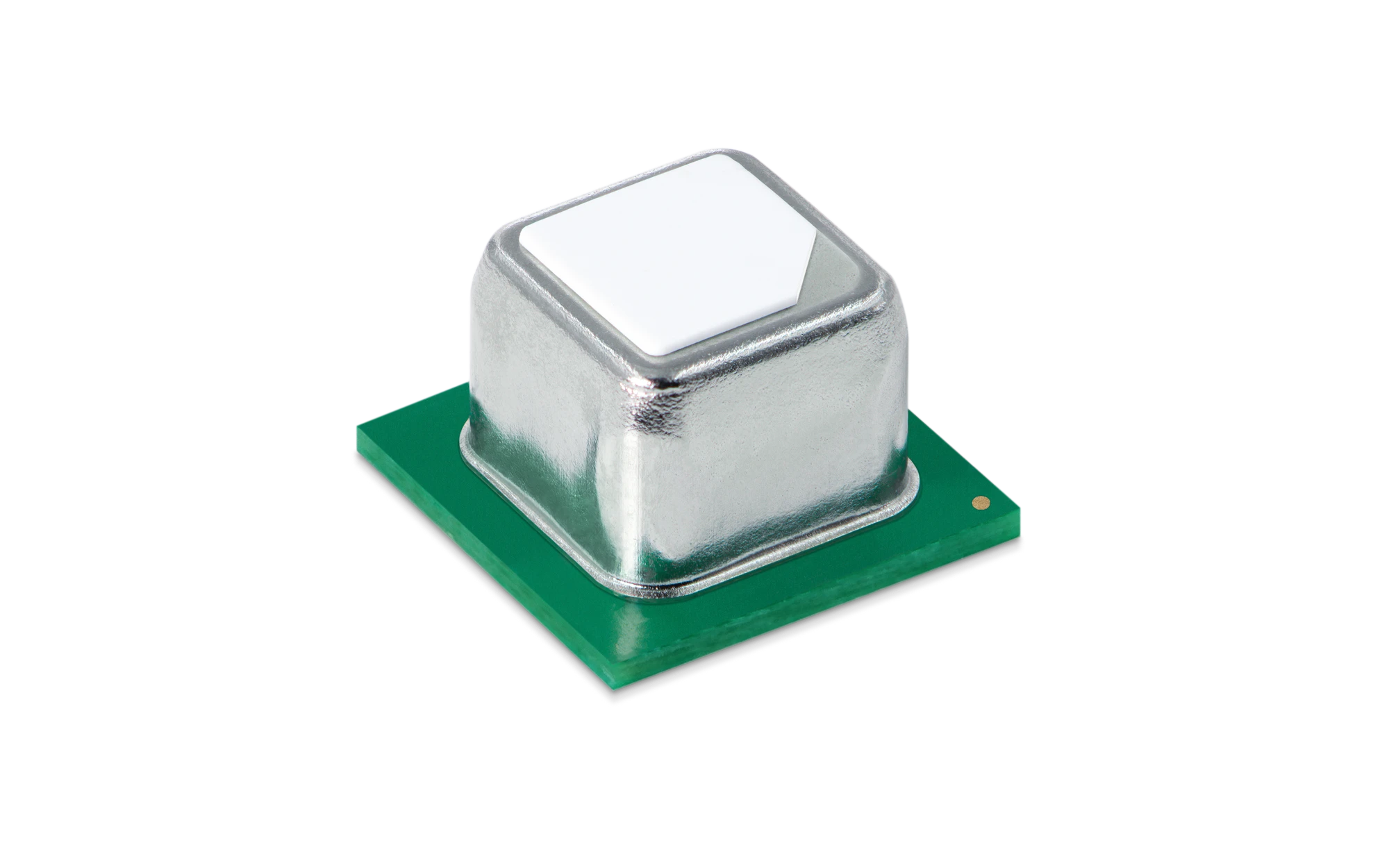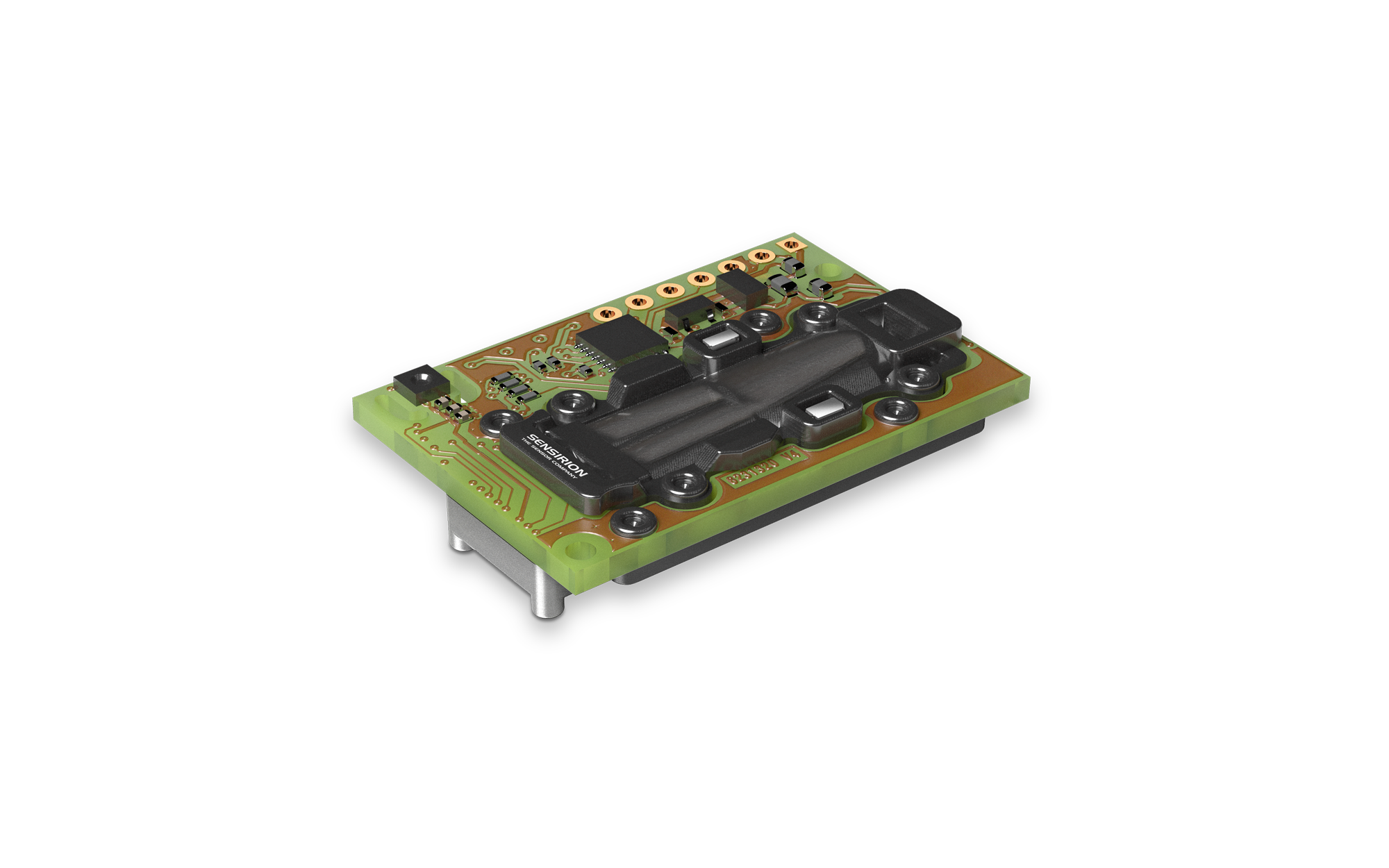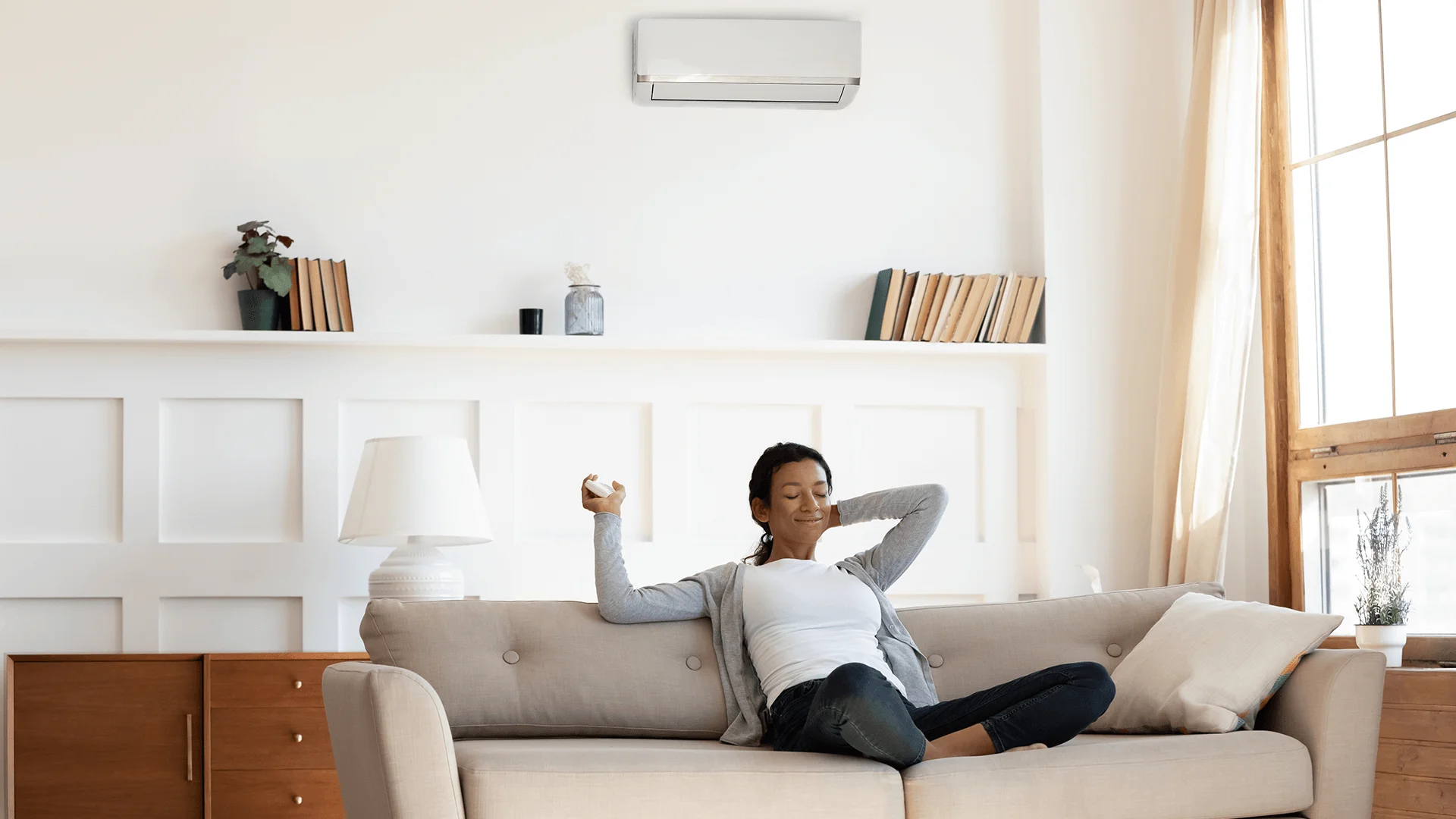
CO₂ monitors
Reliable CO₂ measurements for better air quality
Ideal room ventilation
Ideal, efficient room ventilation brings various benefits. On the one hand, it increases performance, on the other hand, it reduces the risk of infection with viruses and bacteria.
Improved concentration
At elevated CO₂ levels, the ability to concentrate and perform suffers. CO₂ traffic lights promote sufficient ventilation and prevent excessive ventilation. Especially during the winter months, excessively low indoor temperatures can be avoided.
Reduction of the risk of infection with viruses or bacteria
The higher the CO₂ concentration in the room, the greater the possible contamination with viruses and bacteria. Better ventilation helps to contain infections via aerosols and droplets and to reduce the number of new infections.

Miniaturized CO₂ sensor
Based on a photoacoustic measurement principle, the CO₂ sensor technology could be miniaturized. The new compact design of the sensor allows easy and flexible integration into air conditioning systems.

Thanks to Sensirion's sensor, we can ensure that CARU air accurately and reliably detects CO₂ concentrations.
Susanne Dröscher
Co-CEO from CARU AG
CO₂ sensing for better indoor air quality
Related sensors

Trend topic
Indoor air quality
In recent years, a new demand for clean air has developed among many people who value healthy living. When it comes to air quality, most of them rightly are worried about atmospheric pollution, but tend to forget about indoor air pollution.

Specialist article
Monitoring CO₂ concentration
Every year 7 million people die worldwide as a result of exposure to polluted air. With up to 5 times more air pollution being found indoors than outdoors, indoor air quality is currently one of the top five environmental risks to public health as it can impact people’s energy efficiency, performance, well-being, and health.




